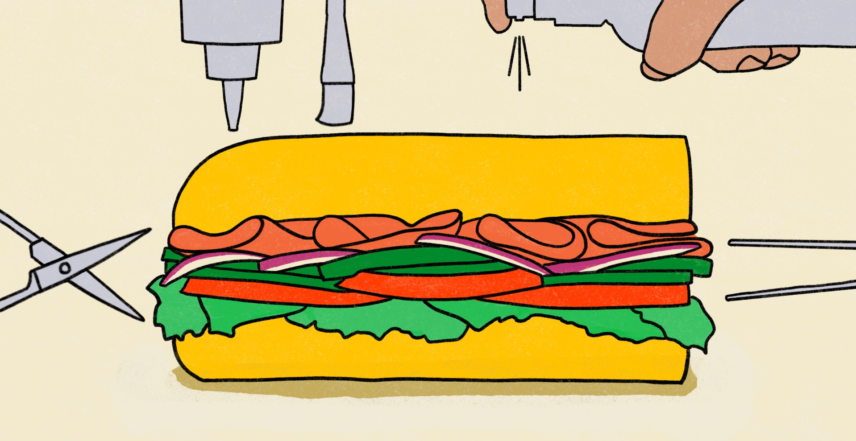Article begins
A degree in sociocultural anthropology may not be the most obvious background for a food stylist, yet it was a love for hands-on, detailed fieldwork that led me into the practical world of food styling.
Food styling can take on many forms, but essentially it is the art of producing and arranging food for the camera (photography and film). I generally work for commercial clients that sell a specific product. Each client has its own values and priorities, and I’m there to interpret and visually represent those values in a mouthwatering way.
Let’s take a Subway sandwich for a case study. I was the food stylist on their latest global Visual Identity System campaign, which updated the Subway look worldwide.
Sourcing ingredients
This lays the groundwork for a successful shoot. It is important to know the suppliers and who has the best of what and when. I source ample quantities and choose only the very best—the client expects the finest ingredients. Only red onions without any external scuff will suit, only the firmest and reddest tomatoes will do. One must keep in mind that what looks small to the naked eye looks enormous on camera. I always look for petit and perfect.

Ingredient preparation
I prep the individual elements, creating something like a collection of colors on a painter’s palette. I generally use just a small amount of each ingredient such as the delicate inner lettuce leaves that look freshest on camera. Or I may have 20 loaves of bread sent from the client, but pick only the one or two that are truly free of blemish.
The stand-in
I always create a “stand-in” sandwich first to represent the basic size, shapes, and colors, but with less emphasis on perfection. The photographer uses this sandwich to frame and light the shot without having to worry about it wilting. Once the proper lighting is in place, we mark the sandwich positioning and start preparing the final sandwich—what we call the “hero” (yes, really).
The “hero”
Here’s where things get tricky, as I begin to work against the clock: ingredients do not stay fresh for long. I build with priority from bottom to top and least delicate to most delicate. I delay adding any sauce or irremovable element until the last moment. For many sandwiches, I dig out the bread insides to make a cozy space for the ingredients, giving the sandwich a fuller and more appetizing appearance. Then I start to arrange what I call my “food sculpture”—a delicate harmony of shape, line, and color—with an emphasis on freshness and appetite appeal. Clients typically have precise specifications for their ingredient quantities and it’s my job to best represent these standards in a delectable way.
Once all is arranged, the finishing touches can include a gentle cheese melt using a custom pointed steamer, a soft spray of water to enliven any veggies, or a “luck favors the bold” one-chance sauce drizzle. I quickly step out of frame and the photographer takes the shot. Either the final photo is approved by the client…or we start again from the beginning.
Just another day in the food styling field…

